The sun delivers 1.2×105 terawatts of power to the earth, which is about 104 times the rate at which human civilisation currently produces and uses energy. More energy from sunlight strikes in one hour than all the energy consumed by humans in an entire year. In fact, the solar energy resources dwarf all other renewable and fossil-based energy resources combined. Being green, it receives heightened attention as well.
A solar cell is basically a sandwich of semiconductor surrounded by layers of electrodes, which convert the sun’s photons into electrons. Photovoltaic (PV) technology can directly convert solar energy into electrical energy without any emission.
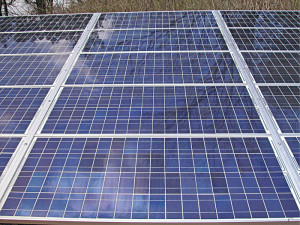
To provide a truly widespread primary energy source, solar energy must be captured, converted and stored in a cost-effective fashion, even if the device operates near the theoretical limit.
The theoretical efficiency limit for even an optimal single-bandgap solar conversion device is 31 per cent. It is because photons having energies lower than the absorption threshold of the active PV material are not absorbed, whereas photons having energies much higher than the bandgap release heat to the lattice of the solid. If all the photons were converted into electricity, the theoretical efficiency limit would have been about 70 per cent.
PV modules shipped for commercial use now have a typical efficiency of 13-15 per cent. The losses are almost entirely due to small reflection, grid shading, heat loss, etc.
At present, the selling price of grid-connected PV electricity is about Rs 20 per kilowatt hour (kWh), whereas utility-scale electric power generation costs about Rs 2.50 per kWh. Hence for solar electricity to be cost-competitive with fossil-based electricity, there must be improvement in efficiency and manufacturing cost must be substantially reduced. If photons having energies greater than the bandgap of the absorbing material do not dissipate their excess energy as heat and instead produce more electrical energy, theoretical efficiency in excess of 60 per cent would be attainable.
Potential candidates for efficiency improvement
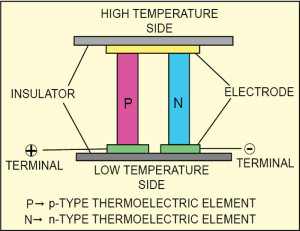
Direct and efficient use of solar energy is given high priority to address energy and environmental issues. The United Nations panel foresees big growth in renewable energy. In 2008 the world consumed around 492 exajoules (1018 joules) of energy and renewable energy made up 12.9 per cent of the total. The contribution of direct solar energy was only 0.1 per cent of the total energy consumed. It is estimated that by 2050 the direct solar energy could grow from 2008 level to about 100 exajoules per year. In the quest of green power, dedicated research work during the last decade has provided a new generation of renewable power source technologies at competitive price.
Since the first recognition in 1839, PV technology has achieved tremendous progress. The solar cell efficiency has increased from 2-3 per cent level in the last century to about 46 per cent in a new generation of PV modules developed in 2010, which is commercially viable. However, there is still much effort needed for efficiency improvement and cost reduction.
Some emerging technologies that can considerably improve energy utilisation efficiency include multi-junction cells, optical frequency shifting, multiple-exciton-generation cells, multiple-energy-level cells, hot-carrier cells, concentration PV systems and hybrid PV systems. However, these technologies are comparatively costly. PVs having quantised band structure, such as quantum wells and quantum dots, can theoretically be as efficient as 60 per cent. In fact, lead-selenide (PbSe) quantum dots have demonstrated such effect in laboratories.
Hybrid solar device
For the single-crystalline single-junction silicon (Si) technology, the conversion efficiency is lower than 30 per cent. Thus a large portion of solar energy is wasted through heat dissipation. Recently, a hybrid solar panel integrating PV, thermoelectric (TE) and hot-water (HW) modules has been developed. With this, the waste heat can be recovered appreciably and electricity generated by using the thermoelectric module, thereby augmenting the overall conversion efficiency of the composite system.
Thermoelectric generator. Thermoelectric generator is a good candidate for thermal energy harvesting. Thermoelectric materials are solid-state energy converters. The combination of thermal, electrical and semiconductor properties allow these to be used to convert waste heat into electricity, or electrical power into cooling and heating directly.
The basic unit of a thermoelectric generator is shown in Fig. 1. It consists of two types of thermoelectric elements—p-type and n-type semiconductors made of bismuth telluride or silicon germanium. At one end, both the elements are connected together with a high-conductivity metal enabling electrons to flow from n-type to p-type leg and also to have uniform hot-side temperature. On the cold side, two metallic electrodes are connected to the legs separately forming positive and negative terminals.
The thermoelectric generator is electrically separated from the hot and cold sides by a suitable insulator so that there is no short circuit or leakage of electricity. Due to temperature difference, electron-hole pairs are created at the hot end, absorbing heat in the process. The pairs recombine and reject heat at the cold ends. A voltage potential, the Seebeck voltage which drives the hole/electron flow, is created between the hot and cold ends of the thermoelectric element legs.
The Seekbeck EMF depends only upon the material and temperature. Figure of merit ‘Z’ indicates the efficiency of the thermoelectric couple. It can be expressed as Z=S2.σ/λ, where ‘S’ is Seebeck coefficient, ‘σ’ electrical conductivity and ‘λ’ thermal conductivity.
As a solid-state device without any moving part, a thermoelectric generator can be completely silent and extremely reliable. It can be used for years to provide electrical power. The existing thermoelectric modules are expensive and their conversion efficiency is low in non-concentrated solar energy technologies. In order to improve the performance, the efficiency is to be maximised by selecting the best semiconducting materials with controlled doping. Materials made of heavy atoms like lead and bismuth have low lattice thermal conductivity. Hence compound semiconductors like bismuth telluride (Bi2Te3) and lead telluride are useful thermoelectric materials.
Another factor that reduces thermal conductivity is induction of disorderliness of the atomic arrangement in the crystals. In bismuth telluride, if some atom of bismuth is replaced with antimony or some of tellurium is replaced with selenium, the thermal conductivity reduces by a factor of ten, but the electrical properties are retained. As efficiency is inversely proportional to thermal conductivity (λ), it would increase efficiency by a factor of more than two.
Nanotechnology and its potential quantum-scale synthesis lead to new super thermoelectric materials, which give a higher efficiency due to confinement of electrons to two-dimensional quantum wells while suppressing the thermal conductivity. In today’s commercial thermoelectric modules, efficiency is about 1.0. But emerging nanotechnology in thermoelectric cells has changed the situation. Recently, researchers working on this concept have developed super thermoelectric materials which can achieve efficiency of about 2.4 for a nanoscale structure (made by alternating layers of thermoelectric materials that both enhance Seebeck coefficient and suppress thermal conductivity at room temperature) with conversion efficiency of about 20 per cent.
Concept of hybrid system
The hybrid system integrates PV, thermoelectric and hot-water modules in a composite structure, which can be installed on the rooftop or in an open ground that receives sunlight. The PV module generates electricity directly from sunlight, whereas the thermoelectric module harvests the solar energy which is otherwise wasted in the PV module through heat dissipation and converts it into electricity. The hot-water module cools the PV module, thereby increasing its efficiency. It also provides a temperature gradient for the thermoelectric module to operate. In addition, it supplies hot water for domestic and other uses by recovering the waste heat.
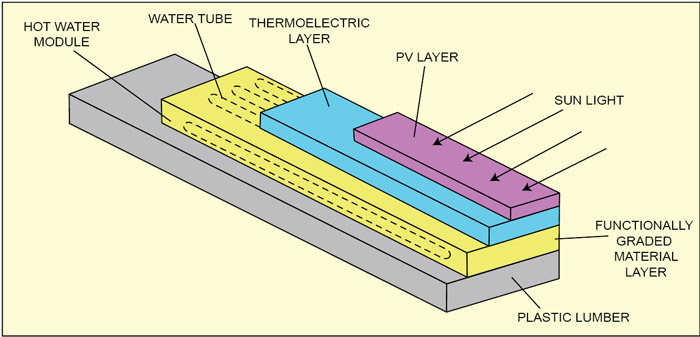
Typically, the energy payback time (EPBT) for a solar thermal system is less than for PV systems. The EPBT of a PV system can be reduced by using it in a hybrid system integrating PV with solar thermal components, such as hot-water tubes and thermoelectric generators. This approach provides a viable solution to significantly increase the overall energy utilisation efficiency, while alleviating the disadvantages of a single approach. A PV thermal collector enables heat harvesting while improving the PV utilisation efficiency by controlling the temperature of PV modules.
Design. Fig. 2 shows the design of a hybrid solar panel utilising PV, thermoelectric and hot-water modules in a multi-layered configuration. The PV surface layer is followed by the thermoelectric layer. The PV cells convert the sun’s electromagnetic radiation into electricity, while the thermoelectric layer converts the sun’s heat into electricity. The thermoelectric layer is bonded to a plastic lumber plate through a functionally-graded material interlayer where hot-water tubes are cast. The functionally graded material layer contains aluminium powder dispersed in a high-density polythelene (HDPE) matrix with a graded microstructure. Water pipelines are cast within the functionally graded material layer to control the panel’s temperature.
The plastic lumber made of recycled polymeric materials provides mechanical support and heat insulation of the building skin. The design has the following advantages:
1. The temperature difference between the PV module and the water tubes provides a considerable temperature gradient within the thermoelectric layer for a higher efficiency of thermoelectric utilisation.
2. The hot-water tubes whose temperature is partially controlled by the flow rate can be directly utilised by water-heating systems for domestic usage.
3. Due to the temperature control on the roof, the room temperature can be significantly reduced and the thermal comfort in the building improved.
4. A high percentage of aluminium powder rapidly transfers heat into the water tubes, but below them the heat conduction is blocked by the HDPE and the plastic lumber substrate.
5. The thin-film PV layer improves heat conduction and structural integrity within the panel and protects the plastic lumber from ultraviolet radiation.
Materials. The PV layer uses commercial single-crystalline silicon solar cells with an open-circuit voltage (Voc) of 0.55V, short-circuit current (Isc) of 4400 mA and energy conversion efficiency of 13 per cent at 25°C under 1000W/m2 irradiation. Each panel size is 12.5×12.5 cm² with 270µm thickness.
The thermoelectric layer is made of 97 bismuth-telluride-alloy thermocouples arranged electrically in series and thermally in parallel to form the thermoelectric module measuring 2.9×2.9×0.5 cm3.
Pure aluminium powder and HDPE matrix are used to fabricate the functionally graded material layer. The 6.4mm dia. water tubes are made with copper. The plastic lumber substrate is made of recycled polymeric materials instead of conventional bismuth-telluride modules. If the design is adopted with quantum-well (QW) and quantum-dot (QD) thermoelectric modules, much higher efficiency can be achieved. However, currently most quantum-well and quantum-dot structures are fabricated with molecular beam epitaxial technique, which is expensive.
A promising new technique using colloidal method is now emerging. It can provide quantum-dot thermoelectric structures at a much lower price in the future. To fabricate the functionally graded material layer, the HDPE and aluminium powder are mixed layer by layer with 50 per cent aluminium volume fraction at the top layer and pure HDPE aluminium layer at the bottom.
The moulded functionally graded material and aluminium powder matrix with dimensions of 30.5×30.5×1.5 cm³ is baked in vacuum at 200ºC for 1.5 hours. Copper tubes are cast into functionally graded material layer with a separation of 2.5 cm. The functionally graded material layer is bonded to the plastic lumber substrate by vacuum sintering. Thermally conductive paste with a 1.9W/mK conductivity is used as an adhesive between PV, thermoelectric and functionally graded material layers.
Efficiency and cost
PV cell efficiency is the ratio of the electrical energy produced by a PV cell to the energy from sunlight falling on the cell. The typical efficiency of a commercial single-crystalline silicon solar cell is about 13 per cent at room temperature. However, the efficiency of a hybrid solar panel put under the irradiation of 750W/m2 with water flow is about 18 per cent. Moreover, hot water is available for domestic/commercial use. Without water flow the PV temperature reaches 90°C and its efficiency decreases to 13 per cent.
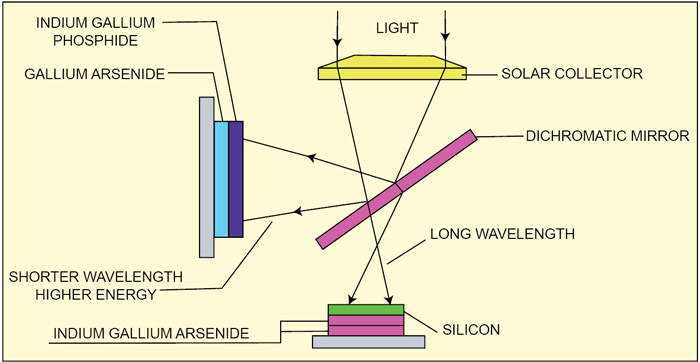
Typical electric power generation from a PV cell is 120W/m2. From bulk thermoelectric module it is 10.3W/m2. This increases to 27W/m2 when a quantum-well thermoelectric module is used, as the ‘Z’ value of the quantum-well thermoelectric module is twice that of the bulk thermoelectric module. The approximate cost of a hybrid panel using the PV-hot-water module is about Rs 20,000/m2. PV-thermoelectric-hot-water panel costs about Rs 100,000/m2.
Light-splitting trick
To create highly efficient solar cells, researchers have employed a novel engineering strategy where the solar power device splits light into high- and low-energy beams and routes these to different electricity producing materials. Different varieties of semiconductors layered in solar cells respond to photons of varying energies to produce electricity. Until now, however, the requirement of atomic structures of such layers line-up to allow proper crystal growth has limited the combinations that could be used to gain better efficiency.
The sunlight can be split into different wavelengths by using a prism. These wavelengths can be used separately for different electricity-producing solar cells. This was done in 1970 and the rainbow cell so created had a very low efficiency as a lot of sunlight was lost. However, recent advances in optics have made it possible to manufacture dichromatic mirrors.
Mirrors made with dichromatic material can process and split the light with a 93 per cent efficiency. Fig. 3 shows the schematic diagram of such a device. White incident sunlight is split with the help of dichromatic mirror into two components—shorter wavelength with higher energy, and longer wavelength with lower energy. While the shorter-wavelength light is utilised in indium-/gallium-based solar cells, the longer-wavelength light is used in silicon-based cells. Under laboratory condition, the efficiency has been reported to reach 40 per cent. The goal of the manufacturing cost has been set to about Rs 140 per watt of energy (without government subsidy).
Solar cells that work at night
A new breed of solar cells that harvest energy at night could double the output of conventional panels. It sounds like an oxymoron, but a new breed of nanoscale light-sensitive antennae could soon make this possible, heralding a novel form of renewable energy.
Under ideal conditions, solar arrays of billions of tiny antennae can collect 84 per cent of incoming photons. A complete system of this new breed of electronic solar cells would have an overall efficiency of 46 per cent considering all losses, whereas the overall efficiency of the most modern silicon solar cells is stalled at 25 per cent. What is more, if the orientation of the panel with respect to the sun is wrong, light reflects off the silicon solar cell instead of being absorbed to generate power. The key to these new devices is their ability to harvest radiation (infrared).
Beyond the red end of the visible range, but at frequencies higher than of radar waves and microwaves, is the infrared region of the electromagnetic spectrum between 1012 and 5×1014Hz frequencies (or wavelengths from 0.1 to 7.5×10-5 centimetre). Nearly 50 per cent of the sun’s radiant energy is emitted in the infrared region, with the rest is primarily in the visible region.
Infrared is remitted by the earth’s surface after the sun goes down, meaning that these new-generation solar cell antennae can capture some energy even during the night. Unlike PV cells, which use photons to liberate electrons, the antennae resonate when hit by light waves, generating an alternating current that can be harnessed.
To build an array that could capture both visible and infrared radiations, multiple layers of antennae—with each layer tuned to a different optical frequency—are to be assembled. Further, two technological parameters are to be fulfilled. First, the antennae must be close to the size of the wavelength being captured, which in the case of the solar spectrum can be very small—from millimetres down to a few hundred nanometres. Second, the currents produced will be alternating at frequencies too high to be of use unless first converted into a steady current. The problem here is that silicon diodes, which are crucial to the conversion, typically don’t operate at the high frequencies required.
Both of these barriers are now broken. A technique for creating arrays of billions of antennae that are small enough to work with mid, near infrared and far ends of the infrared spectrum is developed. Current-conversion problem is tackled by creating novel diodes capable of handling high optical frequencies.
Semiconductor diodes act like valves, converting alternating current (AC) into direct current. To work with the new-generation antennae, these have to operate at the AC frequencies being received and match the conductive properties of the antenna. Semiconductors are ill-suited for this, as these tend to become less conductive when shrunk to the size of the antennae.
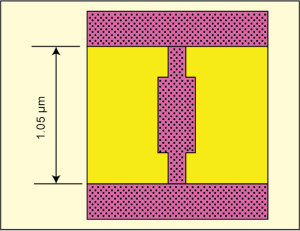
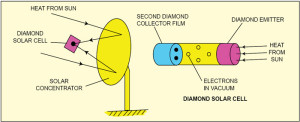
It is found that physical geometry of the device influences current flow. By creating asymmetry in the geometry of the diodes, it funnels electrons to flow only in one way. Nanoantennae are optical collection devices designed to absorb specific wavelengths that are proportional to the size and shape of the nanoantenna. Just like their bigger radio frequency counterparts, these have the advantage of limiting the incoming radiation to one mode with one polarisation.
Several different types of nanoantennae—such as dipole, bow-tie, spiral and log-periodic or microstrip antennae—are used to generate power from optical radiation to suit the specific wavelength. These can be used in the visible and invisible ranges. A nanoantenna is fabricated using electron-beam lithography and lift-off technique.
Typically, a dipole antenna element is made of 100nm-thick evaporated gold. A bolometer made of nickel is patterned at the feed end of the nanoantenna to serve as the detection mechanism. A pair of 200µm bond pads is patterned on both ends of the dipole antenna in order to provide biasing and obtain electricity. The device is fabricated on a silicon wafer with 200nm thermally grown silicon dioxide. An electron micrograph of the device is shown in Fig. 4.
Diamond power
Diamond no bigger than a speck of dust might not interest a bank robber, but is turning out to be a physicist’s best friend. Diamond’s hardness and lustre have been prized for centuries, but when it is reduced to nanoscale size, other valuable properties of electronics emerge. Diamond films can make a new kind of solar cell that generates electricity by absorbing heat rather than visible light wavelength. The property is known as thermionic emission—the property of some materials to spit out electrons when heated. It turns out that ultra-thin diamond is better at this than most other materials.
The device is made of two thin films of diamond a few micrometres thick, which are separated by a vacuum a few hundred micrometres thick. A reflective dish is used to focus sunlight onto the device. As sunlight heats the outer diamond film (the emitter), the hottest most energetic electrons fly off. These travel across vacuum to a second diamond film (known as collector) that generates current.
A bank of such diamond-based solar concentrators can be made to exploit the sun’s energy to electric power. To make the diamond films work effectively, lithium atoms must be implanted into them. These atoms form positive charges near the film surface, which helps hot electrons leave.
Unfortunately, the very arrangement of carbon atoms that gives diamond its hardness makes it difficult to insert alien atoms. Lithium atoms seep extremely slowly in the hot diamond film. Hence lithium ions are used, which diffuse more easily throughout the structure.
The arrangement of a solar diamond thermoelectric generator device is shown in Fig. 5. A number of such devices arranged in arrays can be utilised to harvest the sun’s thermal energy in the form of electrical energy. The efficiency of this system is much more than the conventional solar thermal power generator.
The author has retired as deputy general manager, I/C, from MECON Limited






